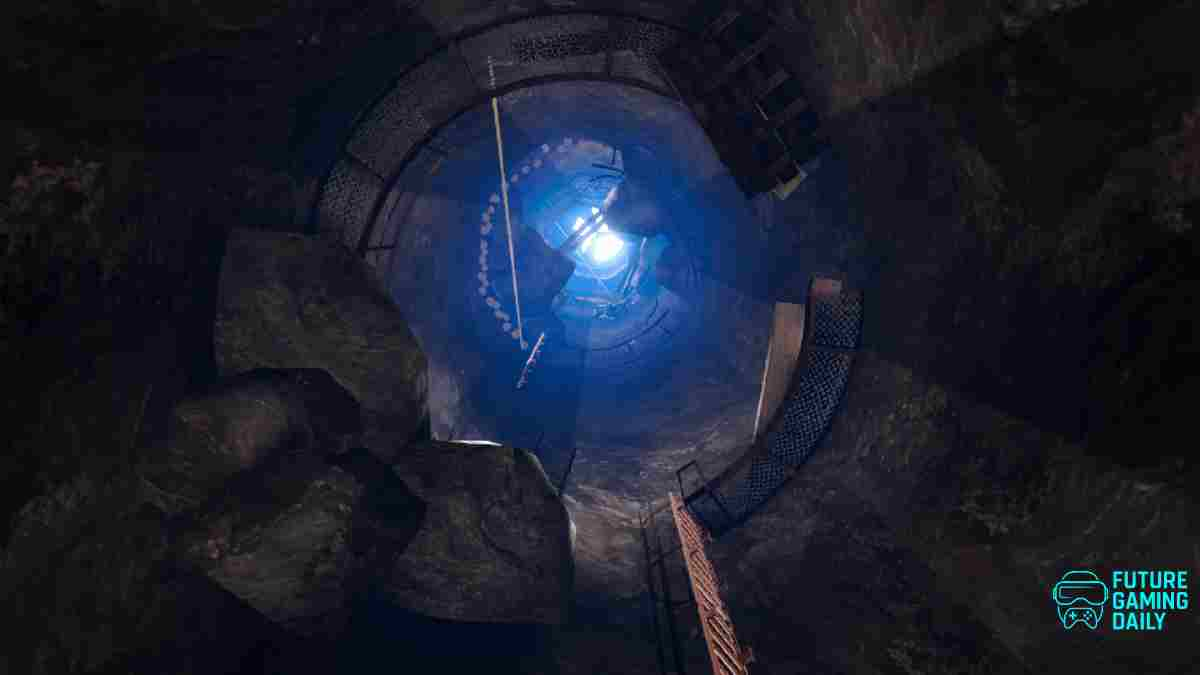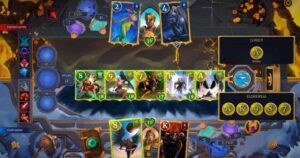This week’s XR slate covers a surprising range. Rather than leaning into one genre or platform, the releases mix twitch-heavy roguelike gameplay with meditative storytelling and interactive art. It’s not blockbuster season, but the diversity here shows how flexible the XR space is becoming.
Roboquest, Hidden Pictures: Puzzle Stories, and Living Room each bring something distinct to the table. Whether that’s combat pacing, narrative rhythm, or ambient exploration, there’s more going on beneath the surface than their storefront pages let on.
Roboquest VR Emphasizes Movement and Momentum
Originally a flatscreen PC shooter, Roboquest has made its way into VR with a Quest-native version. It’s still the same core loop: fast runs, randomized upgrades, and robotic enemies that don’t stop pushing. But in VR, that movement becomes central.
What used to be quick strafes and jumps on a keyboard now rely on full-body momentum. Sliding, dodging, and positioning in 360 degrees changes how you approach each run. It’s closer to games like Compound or Hellsweeper, where verticality and spatial awareness are part of the core challenge. The art style still leans toward cel-shaded minimalism, which helps it maintain clarity during chaos. It won’t push visual limits, but that choice keeps the frame rate stable where it matters most.
Hidden Pictures Shifts to Narrative Light Interaction
Hidden Pictures: Puzzle Stories isn’t trying to compete with traditional puzzle titles. Instead, it operates in the gray space between kids’ storybooks, interactive media, and light mystery-solving. You explore scenes, find details, and gradually unravel low-stakes, personal stories.
Visually, it lands somewhere between a family-friendly comic and an animated short film. The interaction isn’t deep, but the atmosphere carries weight. It’s clearly built more for shared VR experiences, especially for younger players or parents looking for non-gaming content that still feels immersive. It won’t hold up under scrutiny from puzzle purists, but that’s not its goal. This is a calm, touch-and-look experience meant to ease people into spatial storytelling.
Living Room Experiments with Format and Tone
Living Room is harder to classify. It plays out like a hybrid between a virtual documentary and a semi-interactive short. You’re inside someone else’s apartment, moving through objects, memories, and routines. It’s slow and unfiltered, focusing more on vibe than interaction.
The point here seems to be emotional resonance. You aren’t solving puzzles or fighting enemies. You’re observing. Living Room borrows from theater and personal documentary formats, which makes it feel more like a space to be in than a game to win.
These kinds of experimental XR projects are still niche, but they offer a needed counterweight to action-heavy VR design. It’s not for everyone, but that’s also the point.
A Week That Shows Range Without Noise
None of these titles are pushing giant marketing campaigns. But taken together, they show a wide spectrum of what XR can do—something small, something fast, something quiet.
In a market still wrestling with what “VR game” really means, these releases don’t try to answer that. Instead, they offer focused slices that don’t overextend. For players keeping an eye on experimental formats or new approaches to presence, this was a week worth watching.
Virtual Reality Explorer & Game Reviewer
Always the first to plug in. VRSCOUT dives head-first into the most immersive VR worlds, analyzing mechanics, comfort, innovation, and that elusive “presence” factor. If he says it’s worth it, it probably is.




